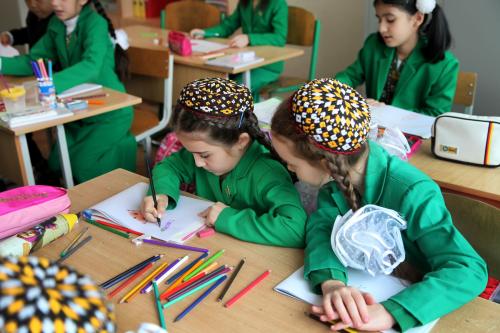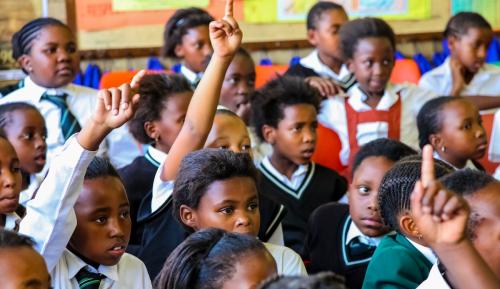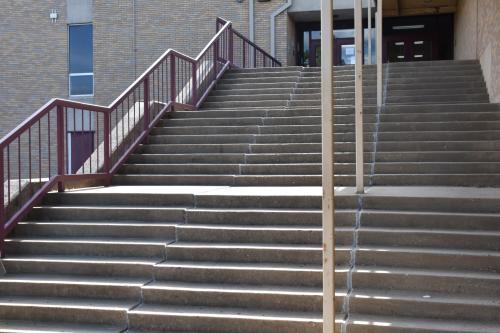The “way money [in education] is spent is just as important, if not more important, than the amount that is being spent,” said a recent Brookings report. This is especially true here in Malawi, as illustrated by a case study I prepared with Michael Mambo for the July Oslo Summit on Education for Development.
Malawi is one of the poorest countries in the world and population growth has made education sector development difficult. There are now 10 million children below 20 years of age. Despite this, access to primary schools is significantly better than average in Malawi, compared to the sub-Saharan region—nearly all the country’s age-6 are children enrolled in school. This is a result of the government’s commitment to education, including the adoption of free primary education in 1994.
However, on other education indicators Malawi falls much lower than other countries in the region. The primary school completion rate is just 31 percent, and a mere 15 percent of children enroll in secondary education. Additionally, the ratio of pupils to qualified teachers is high: 78:1 in primary schools and 44:1 in secondary schools. At the primary level, there is an average of 111 students per classroom. These factors impact learning outcomes. According to independent assessments, Malawi’s primary children demonstrate weaker reading and math scores on average than almost all comparable countries in the region.
On a more positive note, Malawi has achieved gender equity at the primary level, with increasing equity in the highest grades (where female dropout rates are much higher than male dropout rates), though more work is needed especially at secondary and tertiary levels. Malawi has a substantial challenge for secondary and tertiary education regarding socio-economic equity in the distribution of government support. For example, only 3 percent of government subsidies at the tertiary level benefit the two lowest wealth quintiles, while 82 percent benefits the highest quintile.
The case study identifies four bottlenecks to further progress in Malawi. These include:
- Persistently high repetition rates—especially in lower primary school, where some 25 percent of children each year repeat the same grade.
- High cost and inequitable distribution of government support for tertiary education.
- Weak management capacity, a problem that is apparent throughout the civil service.
- Mismanagement of resources, for which Malawi’s government has had negative publicity in the last two years.
Overall, with about 40 percent of public education expenditure funded by donors, total spending on education has been around 7 percent of GDP. This rate is higher than many other African countries with better education results, including Kenya, Uganda, Mozambique and South Africa. This implies that Malawi has a lower level of expenditure efficiency.
One notable area of expenditure in which Malawi may be setting a high standard is the primary school grant program, through which grants are given to school management committees made up of elected community members and senior teaching staff. The grant is about $1,200 per school each year (more for large schools) and evidence of significant benefits from this new program is already emerging. In addition, the program greatly contributes to improved equity, decentralization, and accountability. Future funding from the Global Partnership for Education is expected to finance a performance-based element of these grants.
In order to address these challenges, our report recommends four priorities for action:
- First, following the revelation of large thefts within government, many donors have suspended budget support to Malawi. The government is struggling to cope without such support and the education sector is already experiencing setbacks. Addressing this requires immediate action, including by aiming to find a donor finance modality that can support underfunded budget lines, yet has sufficiently robust systems of accountability. Donors and government are working on this.
- The second priority is to improve the efficiency of resource use by addressing the four bottlenecks listed above. Many of these challenges are deep-rooted and have been present for years. The Malawi government must start a process with clear leadership to catalyze “business as unusual.”.
- Third, the government should seek donor support for education systems development. This may include a combination of technical assistance and financial support. Such support needs careful design to ensure sustained results. Political economy analysis could be an essential tool in this process. More emphasis will be needed on achieving strong working relationships between government and donor agencies, including technical assistance and flexibility on the part of donors, for example, by making changes in key individuals to ensure a good fit.
- Finally, government and donors should put more focus on aid harmonization. While donors may be unable to return to pooled budget support in the short term, other pooled financing modalities are possible, despite the different regulations and varying risk-appetites among donors.
While additional resources are needed immediately to improve education in Malawi, the use of available resources and the establishment of sustained and effective donor-government relationships is equally if not more important to achieving education aims.
The Brookings Institution is committed to quality, independence, and impact.
We are supported by a diverse array of funders. In line with our values and policies, each Brookings publication represents the sole views of its author(s).



Commentary
Malawi needs more and more effective donor resources for education
August 31, 2015